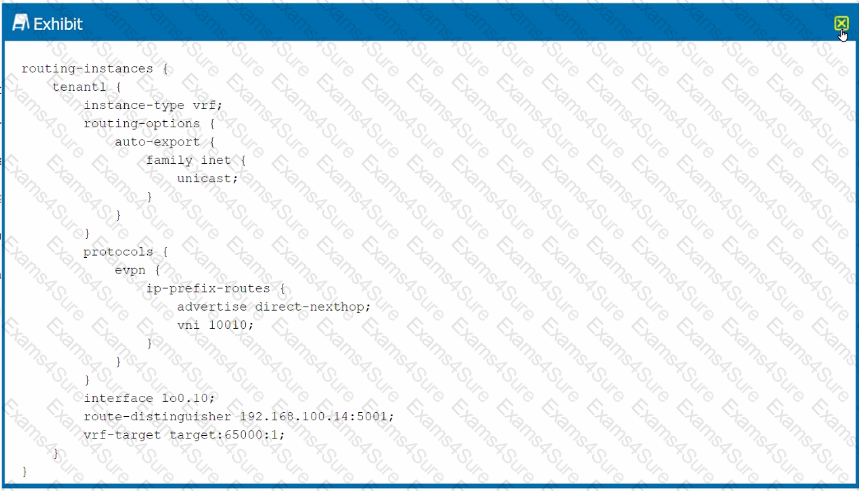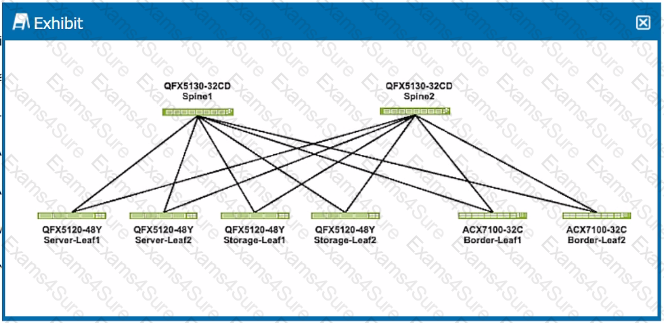Data Center Professional (JNCIP-DC) Exam
Last Update 2 months ago
Total Questions : 65
Data Center Professional (JNCIP-DC) Exam is stable now with all latest exam questions are added 2 months ago. Incorporating JN0-683 practice exam questions into your study plan is more than just a preparation strategy.
JN0-683 exam questions often include scenarios and problem-solving exercises that mirror real-world challenges. Working through JN0-683 dumps allows you to practice pacing yourself, ensuring that you can complete all Data Center Professional (JNCIP-DC) Exam practice test within the allotted time frame.
You are deploying a Clos IP fabric with an oversubscription ratio of 3:1.
In this scenario, which two statements are correct? (Choose two.)
You are asked to identify microburst traffic occurring in the network leading lo packet drops in your data center switches Which two tools would be used in this scenario? (Choose two.)
You are using a single tenant data center with a bridged overlay architecture. In this scenario, how do hosts of the different virtual networks communicate with each other?
Exhibit.

You want to enable the border leaf device to send Type 5 routes of local networks to the border leaf device in another data center. What must be changed to the configuration shown in the exhibit to satisfy this requirement?
Whatare two ways in which an EVPN-signaled VXLAN is different from a multicast-signaled VXLAN? (Choose two.)
You are asked to automatically provision new Juniper Networks devices in your network with minimal manual intervention Before you begin, which two statements are correct? (Choose two.)
Exhibit.

You are deploying a VXLAN overlay with EVPN as the control plane in an ERB architecture.
Referring to the exhibit, which three statements are correct about where the VXLAN gateways will be placed? (Choose three.)
You are preparing an sFlow monitoring system configuration.
In this scenario, what Information will be included in the datagram sent to the sFlow collector? (Choose two.)
As part of the onboarding process for new switches being added to your data centers, your company uses Juniper Networks' ZTP process. As part of the ZTP process, a script is executed by the devices being onboarded.
Which statement is correct in this scenario?
Exhibit.

Referring to the exhibit, Host1 (10.1.1.1) is failing to communicate with Host2 (10.1.2.1) in a data center that uses an ERB architecture. What do you determine from the output?


TESTED 26 Mar 2025
Hi this is Romona Kearns from Holland and I would like to tell you that I passed my exam with the use of exams4sure dumps. I got same questions in my exam that I prepared from your test engine software. I will recommend your site to all my friends for sure.
Our all material is important and it will be handy for you. If you have short time for exam so, we are sure with the use of it you will pass it easily with good marks. If you will not pass so, you could feel free to claim your refund. We will give 100% money back guarantee if our customers will not satisfy with our products.